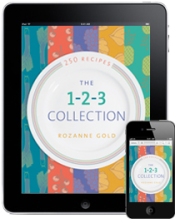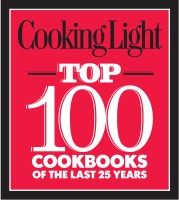 Salsa #7 refers to the ranking of recipe requests on Google for this vibrant condiment. Salsa, in fact, has overtaken ketchup sales in America in dollar value (not volume, yet.) No one could really have anticipated it, except perhaps the guys behind the Tostitos and Pace brands. According to one study, ketchup just edged out salsa by units sold, 176 million to 174.9 million. Pretty close. But because ketchup bottles are bigger, ketchup trounced salsa in pounds sold. Nonetheless, no one dips a tortilla chip into a bowl of ketchup! And there are no Champion Ketchup Competitions, such as the World Salsa Competition held by the International Chili Society. What is interesting, too, is that few foods have dances to call their own. Salsa as food; salsa as performance art. I love them both.
Salsa #7 refers to the ranking of recipe requests on Google for this vibrant condiment. Salsa, in fact, has overtaken ketchup sales in America in dollar value (not volume, yet.) No one could really have anticipated it, except perhaps the guys behind the Tostitos and Pace brands. According to one study, ketchup just edged out salsa by units sold, 176 million to 174.9 million. Pretty close. But because ketchup bottles are bigger, ketchup trounced salsa in pounds sold. Nonetheless, no one dips a tortilla chip into a bowl of ketchup! And there are no Champion Ketchup Competitions, such as the World Salsa Competition held by the International Chili Society. What is interesting, too, is that few foods have dances to call their own. Salsa as food; salsa as performance art. I love them both.
As one research firm has discovered, salsa consumption has bucked the usual “proletarian drift” of many other new food products which usually begin in the large coastal metropolitan areas and slowly migrate to the heartland. Instead, salsa began in the southwest and spread its piquancy across America. Salsa is also interesting as it is ubiquitous in the Latino market yet is still considered a bit upscale — and also a healthy choice — by the Anglo marketplace.
Red salsa-in-a-jar has so many uses. My good friend Chase Crossingham makes superb guacamole-filled omelettes and tops them with salsa and sour cream. Splendid. I have pureed the heck out of it, added a touch of olive oil and lime zest, and used it as a puddle for grilled swordfish. Once I steamed 3 pounds of mussels in it and added a splash of tequila. In my cookbook Recipes 1-2-3, I dared make a soup that I called “Sopa de Salsa” — made with half-and-half, yellow onion, and a jar of medium-hot salsa. But there are many other salsas to explore — I like them made with fresh fruit, too — mangoes and pineapple add great verve.
Here’s the 2008 World Champion Salsa winner called Alf’s Salsa. It has lots of ingredients but seems radically simple to make.
4 jalapenos, seeded and deveined
4 serranos, seeded and deveined
2 Anaheim peppers, seeded and deveined
1 yellow bell pepper
1 orange bell pepper
8 Roma tomatoes
juice of 1 lime
16 oz. can of diced tomatoes
16 oz. can of pureed tomatoes
1 red onion
1 yellow onion
1 white onion
1 teaspoon ground cumin
1/2 teaspoon ground cayenne
3 cloves garlic, mashed
2 tablespoons salt
2 tablespoons sugar
1 bunch cilantro
Finely dice the peppers, onions and tomatoes. Add the remaining ingredients except the cilantro. Chill 2 hours; chop the cilantro and add as much as desired.
And here’s a much simpler version!
1 tablespoon oil
1 small onion
1 large clove garlic
2 very large ripe tomatoes
1 small jalapeno pepper, seeded and finely chopped
3 tablespoons finely chopped cilantro
1/2 teaspoon ground cumin
fresh lime juice and Tabasco to taste
Chop all the ingredients very well. Add fresh lime juice, Tabasco and salt to taste. Cover and refrigerate at least 30 minutes.













